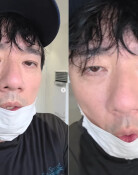[Editorial] A Trade Surplus Is Essential
[Editorial] A Trade Surplus Is Essential
Posted August. 22, 2009 08:49,
Korea enjoyed an export boom this year but this is poised to end. The Korea Customs Service said exports have reached 16.2 billion U.S. dollars and imports 18.3 billion dollars this month for a trade deficit of 2.1 billion dollars as of Thursday. August marks the first time this year that the country posted a deficit in the preliminary trade balance tally through the 20th of a month this year. The figure could eventually return to the black, but might also finish in the red. If the recession-derived trade surplus is reversing course in turning into a deficit, trouble in economic management will ensue. It is important for Korea to keep a trade surplus even if driven by recession.
The trade surplus remained intact for six months from February to July, but narrowed to 4.41 billion dollars last month, the lowest since March. If this month sees a red figure, this trend cannot be considered temporary.
Thanks to the recession-derived trade surplus, Koreas current account surplus is expected to exceed 20 billion dollars this year, a huge reversal from the deficit of 6.4 billion dollars posted last year. The foreign exchange rate has stayed stable, and as a result, the Korean economy has overcome the global economic crisis ahead of others.
The outlook for a recession-derived trade surplus is uncertain, however. Economic conditions for Korea, including the foreign exchange rate and raw material prices, are increasingly deteriorating. With the trade balance staying in the black for months, the won has surged in value against the U.S. from nearly 1,600 won in March to the 1,200 won level this month. In tune with the rebounding global economy, crude oil prices have doubled from 36 dollars per barrel late last year to the 70 dollar level over a six-month period since raw materials prices are poised to rise again. For Korea to sustain its trade surplus when the foreign exchange rate and raw material prices grow unfavorable, it must secure non-cost competitiveness including cutting-edge technologies, market exploration and the expansion of free trade agreements.
The best strategy is to transform the recession-derived surplus to the one derived from an economic boom. To increase jobs and improve welfare, the trade surplus must be preserved and imports and exports must rise. The country has sustained trade surpluses but for just six months, while the surplus is declining in value. If exports slow down, Korea must find ways to augment them. If the government seeks to expand domestic demand amid falling exports, this could destabilize the foreign exchange market by disrupting the trade surplus.




![[김순덕의 도발] ‘李부터 연임’ 개헌, 이 대통령은 가능성을 말했다](https://dimg.donga.com/c/138/175/90/1/wps/NEWS/IMAGE/2026/01/16/133172656.1.jpg)

![“설거지해도 그대로”…냄비 ‘무지개 얼룩’ 5분 해결법 [알쓸톡]](https://dimg.donga.com/c/138/175/90/1/wps/NEWS/IMAGE/2026/01/15/133164664.3.png)
